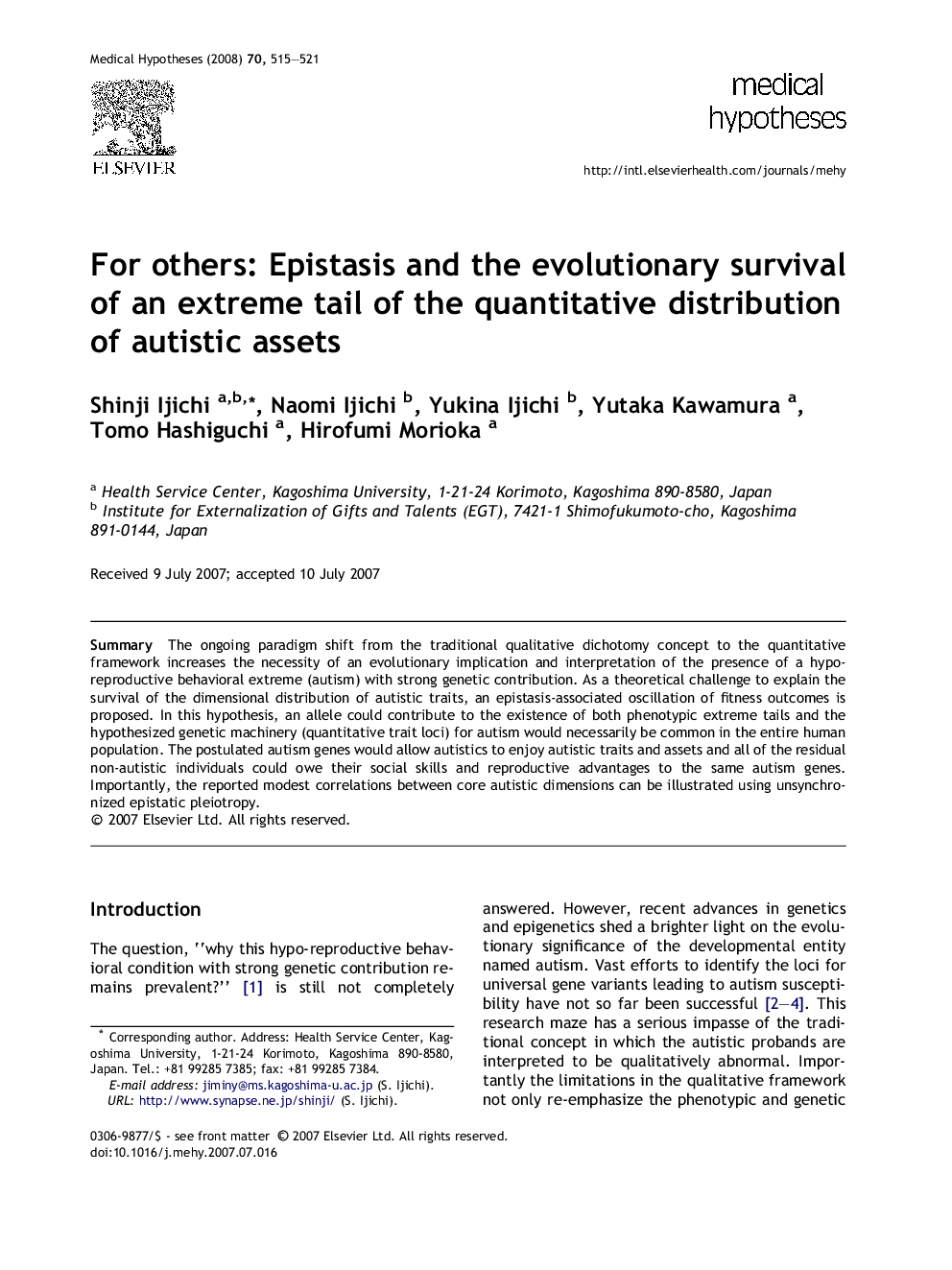| Article ID | Journal | Published Year | Pages | File Type |
|---|---|---|---|---|
| 2491052 | Medical Hypotheses | 2008 | 7 Pages |
SummaryThe ongoing paradigm shift from the traditional qualitative dichotomy concept to the quantitative framework increases the necessity of an evolutionary implication and interpretation of the presence of a hypo-reproductive behavioral extreme (autism) with strong genetic contribution. As a theoretical challenge to explain the survival of the dimensional distribution of autistic traits, an epistasis-associated oscillation of fitness outcomes is proposed. In this hypothesis, an allele could contribute to the existence of both phenotypic extreme tails and the hypothesized genetic machinery (quantitative trait loci) for autism would necessarily be common in the entire human population. The postulated autism genes would allow autistics to enjoy autistic traits and assets and all of the residual non-autistic individuals could owe their social skills and reproductive advantages to the same autism genes. Importantly, the reported modest correlations between core autistic dimensions can be illustrated using unsynchronized epistatic pleiotropy.
